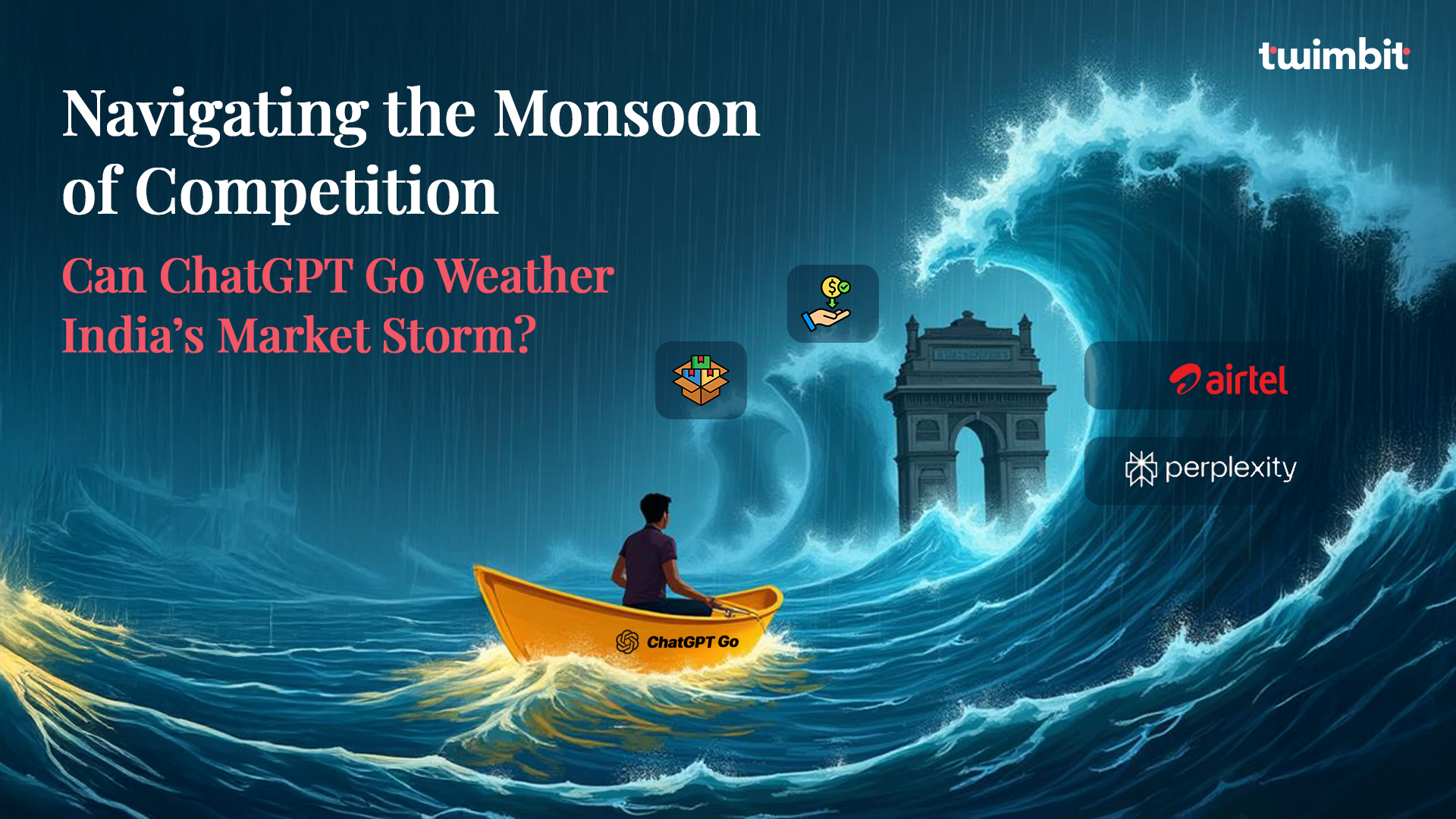August 20, 2025

In a market long dominated by enterprise revenue for Large Language Models (LLMs), OpenAI’s launch of the ChatGPT Go subscription at ₹399 per month in India marks a bold pivot to the Business-to-Consumer (B2C) segment. Offering 10x higher usage limits and priority access, this mid-tier plan—between the free version and premium ChatGPT Plus—has sparked intense speculation.
With India’s digital economy projected to hit $1 trillion by 2030, ChatGPT Go could redefine affordable AI access—or falter under local pressures. But is this truly disruptive, or is OpenAI navigating a monsoon of competition, where telco giants and price-sensitive currents threaten to wash away its ambitions? As a telecom analyst, I’m exploring the implications, challenges, and potential for reshaping LLM monetization in India and beyond.
LLMs like ChatGPT have historically relied on enterprise clients, with B2C as a minor slice. With India being the second largest market for ChatGPT after the US based on 2025 traffic data, OpenAI is clearly doubling down on growth in this region. The ₹399 ChatGPT Go launch signals a shift to tap India’s vast, cost-conscious consumer base. More than a pricing trial, it’s a blueprint for penetrating developing economies in APAC, Latin America, and Africa. Success in India could shape strategies elsewhere, but the stakes are high, and victory is uncertain.
Let’s unpack the specifics of ChatGPT Go before dissecting its market fit:
Social media hails ChatGPT Go as democratizing AI, but is OpenAI’s ₹399 bet a game-changer or a misstep in a telco-dominated market? As analysts, we must look beyond the buzz. I argue structural barriers may limit uptake, making the road ahead challenging.
1. Airtel’s Perplexity Pro Bundle: A Formidable Roadblock
Airtel, with a 33% customer market share, bundles a free Perplexity Pro subscription for a year, offering near-unrestricted access to advanced features that outshine ChatGPT Go. Why pay ₹399 when Airtel’s base—and beyond via family connections—gets a superior alternative free? This could significantly shrink OpenAI’s market.
2. Price Sensitivity: Is ₹399 Truly Affordable for India?
Indian consumers, used to telco plans with ARPUs of ₹200-250/month bundling data and OTT services, may find ₹399 steep. Switching to Airtel for a ₹50 premium to access Perplexity Pro seems more appealing, highlighting a price-value mismatch that could hinder adoption.
3. Telco Bundling: The Kingmaker in India’s Digital Ecosystem
Indian telcos excel at bundling to retain customers. Airtel’s Perplexity Pro and perks like free Apple Music for select customers signal a trend of ecosystem plays. Rivals like Jio and Vi may follow with LLM tie-ups, fragmenting the market. Indian telcos could become gatekeepers, challenging OpenAI to adapt. OpenAI’s standalone B2C approach may face hurdles in this context. Exploring commercial arrangements with telcos to bundle ChatGPT Go could potentially offer a pathway to scale through established channels, an avenue worth considering if not already under evaluation.
ChatGPT Go is a litmus test for B2C LLM monetization in price-sensitive markets. Yet, India’s landscape suggests tepid uptake unless OpenAI adapts. Here are three potential scenarios for the road ahead:
Another possibility is that OpenAI aims to gather feedback on a new GPT-5 model, as users on this plan can’t switch to legacy models, or to collect more data from India’s diverse market to refine its offerings.
ChatGPT Go’s experiment offers lessons for OpenAI’s ambitions in developing markets across APAC, Latin America, and Africa. Success depends on grasping local dynamics—price elasticity and distribution. Ignoring telco partnerships could doom similar rollouts, while a refined post-India strategy might make OpenAI a B2C LLM leader.
OpenAI’s ChatGPT Go at ₹399 is a daring step to redefine LLM revenue by targeting consumers. Yet, in India’s telco-driven, price-sensitive landscape, disruption feels more like wishful thinking. As OpenAI navigates this monsoon of competition, towering waves of local telco giants, price-sensitive consumers, and bundled offerings threaten to capsize its ambitions—will it find safe harbor through partnerships or be swept away by the storm? Airtel’s Perplexity Pro, consumer reluctance, and telco bundling cast shadows over this launch. OpenAI needs agility—partnerships, pricing tweaks, and attention to telco trends—to succeed.
What do you think? Will ChatGPT Go defy the odds and carve a B2C niche, or is OpenAI underestimating India’s dynamics? Join the conversation: How should OpenAI navigate this market to win trust?
Connect to unlock exclusive insights, smart AI tools, and real connections that spark action.
Schedule a chat to unlock the full experience